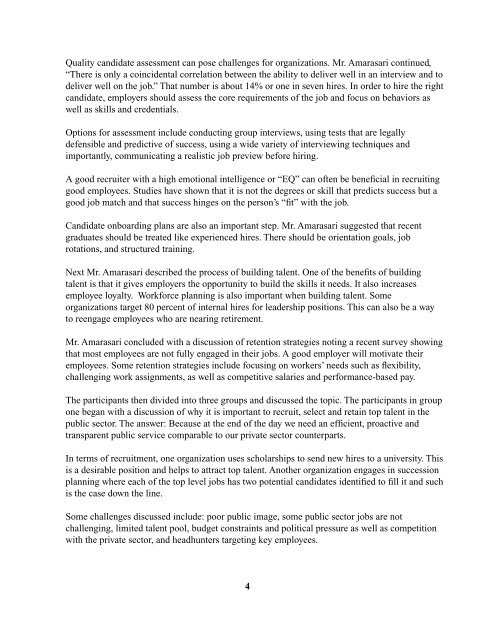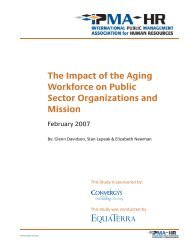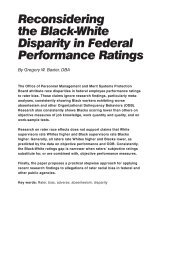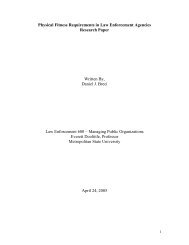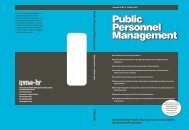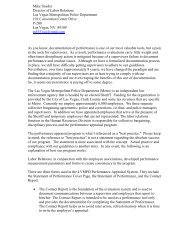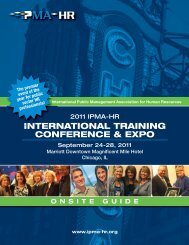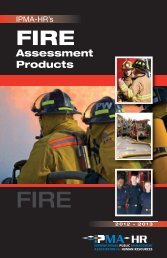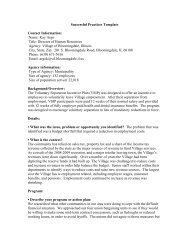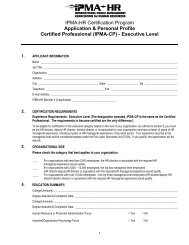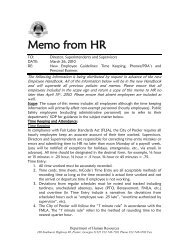31st International Symposium on Public Personnel Management
31st International Symposium on Public Personnel Management
31st International Symposium on Public Personnel Management
Create successful ePaper yourself
Turn your PDF publications into a flip-book with our unique Google optimized e-Paper software.
Quality candidate assessment can pose challenges for organizati<strong>on</strong>s. Mr. Amarasari c<strong>on</strong>tinued,“There is <strong>on</strong>ly a coincidental correlati<strong>on</strong> between the ability to deliver well in an interview and todeliver well <strong>on</strong> the job.” That number is about 14% or <strong>on</strong>e in seven hires. In order to hire the rightcandidate, employers should assess the core requirements of the job and focus <strong>on</strong> behaviors aswell as skills and credentials.Opti<strong>on</strong>s for assessment include c<strong>on</strong>ducting group interviews, using tests that are legallydefensible and predictive of success, using a wide variety of interviewing techniques andimportantly, communicating a realistic job preview before hiring.A good recruiter with a high emoti<strong>on</strong>al intelligence or “EQ” can often be beneficial in recruitinggood employees. Studies have shown that it is not the degrees or skill that predicts success but agood job match and that success hinges <strong>on</strong> the pers<strong>on</strong>’s “fit” with the job.Candidate <strong>on</strong>boarding plans are also an important step. Mr. Amarasari suggested that recentgraduates should be treated like experienced hires. There should be orientati<strong>on</strong> goals, jobrotati<strong>on</strong>s, and structured training.Next Mr. Amarasari described the process of building talent. One of the benefits of buildingtalent is that it gives employers the opportunity to build the skills it needs. It also increasesemployee loyalty. Workforce planning is also important when building talent. Someorganizati<strong>on</strong>s target 80 percent of internal hires for leadership positi<strong>on</strong>s. This can also be a wayto reengage employees who are nearing retirement.Mr. Amarasari c<strong>on</strong>cluded with a discussi<strong>on</strong> of retenti<strong>on</strong> strategies noting a recent survey showingthat most employees are not fully engaged in their jobs. A good employer will motivate theiremployees. Some retenti<strong>on</strong> strategies include focusing <strong>on</strong> workers’ needs such as flexibility,challenging work assignments, as well as competitive salaries and performance-based pay.The participants then divided into three groups and discussed the topic. The participants in group<strong>on</strong>e began with a discussi<strong>on</strong> of why it is important to recruit, select and retain top talent in thepublic sector. The answer: Because at the end of the day we need an efficient, proactive andtransparent public service comparable to our private sector counterparts.In terms of recruitment, <strong>on</strong>e organizati<strong>on</strong> uses scholarships to send new hires to a university. Thisis a desirable positi<strong>on</strong> and helps to attract top talent. Another organizati<strong>on</strong> engages in successi<strong>on</strong>planning where each of the top level jobs has two potential candidates identified to fill it and suchis the case down the line.Some challenges discussed include: poor public image, some public sector jobs are notchallenging, limited talent pool, budget c<strong>on</strong>straints and political pressure as well as competiti<strong>on</strong>with the private sector, and headhunters targeting key employees.4


